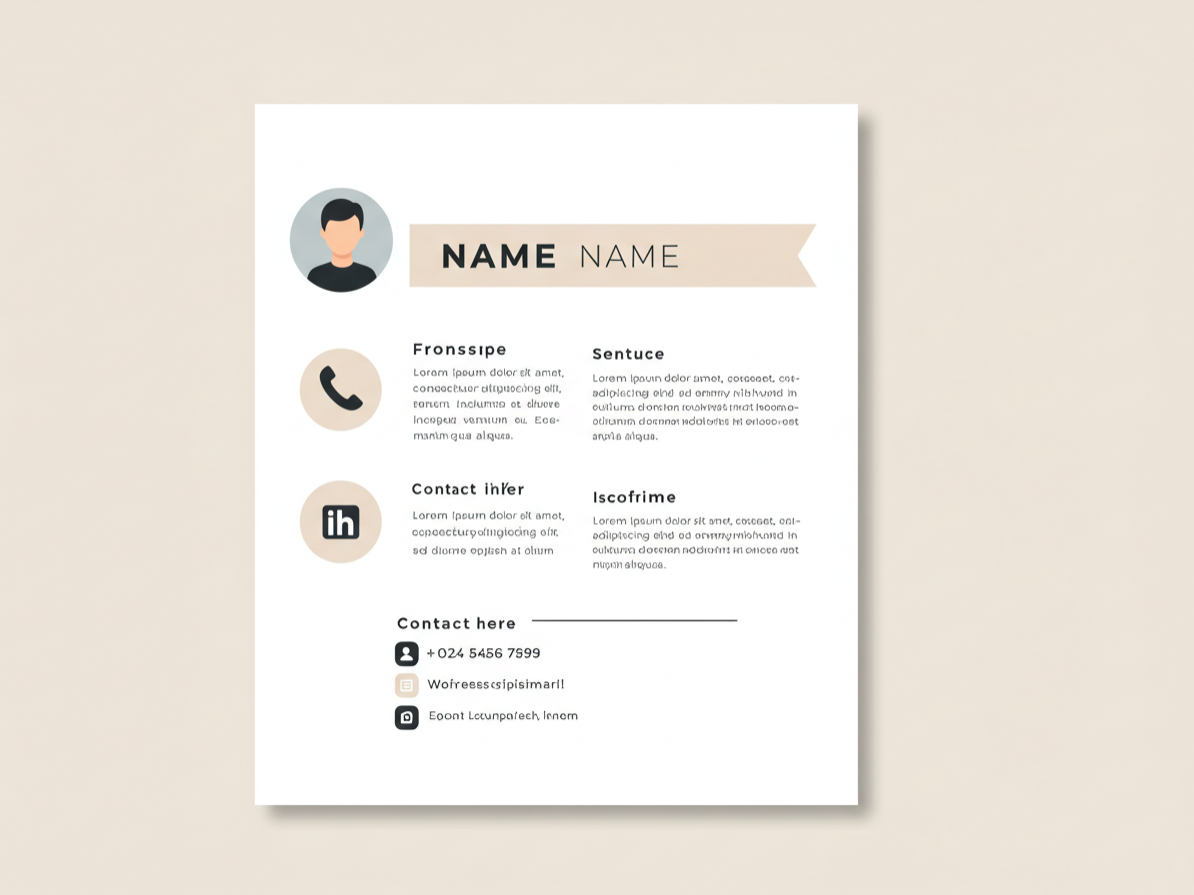"Should there be a resume header and if yes what should it contain? Generally when sending resume, above my name, I add my passport size photo (to the left) and add my current address, along with phone and email (to the right), in case they need to reach out to me. Please let me know in current times, am I doing this correctly?"
Does Your Resume Need a Header? (Yes, Here’s Why and How)
Imagine submitting a resume that wows with experience and skills, but leaves recruiters guessing how to contact you. A resume header prevents that. Unlike academic “running heads” (more on that later), a resume header is your professional introduction at the top of the page. It’s not optional—it’s essential. But in today’s job market, what should it include, and does your current approach align with best practices? A well-structured header helps recruiters see your value immediately. Pair it with a clean, properly named resume file for a professional impression. If you’ve been promoted within a company, your header style should complement how you list promotions on a resume.
What Is a Resume Header and Why Does It Matter?
A resume header is the section at the top of your resume that identifies you and provides key contact details. It’s your first impression and a lifeline for recruiters or Applicant Tracking Systems (ATS) to reach you. For best results, make sure your header is readable—this resume font size guide can help you format it right.
What It Should Include:
- Full Name: Bold and prominent—your professional brand.
- Phone Number: A reliable number with a polished voicemail.
- Professional Email: Something like yourname@email.com—no quirky handles.
- Location: City and state only (e.g., “Chicago, IL”) for privacy and relevance.
- LinkedIn URL (Optional): A customized link to a polished profile adds credibility.
- Portfolio Link (If Relevant): Vital for creative or tech roles to showcase work.
Why It’s Critical:
- Clarity: Recruiters spot your details instantly.
- ATS Compatibility: Ensures software parses your info correctly.
- Professionalism: Signals you understand modern resume norms.
Running Heads vs. Resume Headers: Don’t Mix Them Up
You might wonder: “Should I use a running head like in academic papers?” No. A running head (e.g., “RUNNING HEAD: MY TITLE” in APA style) is for research papers, not resumes. It’s a title and page number combo that’s irrelevant to job applications. Using it screams “academic” when you want “professional.” Stick to a resume header with contact info—nothing else belongs at the top.
Your Current Header: Feedback and Improvements
You mentioned including:
- A passport-sized photo on the left.
- Your current address, phone, and email on the right, above your name.
Here’s how that stacks up today:
Photo:
- Issue: In most countries (especially the U.S.), photos on resumes are discouraged. They can introduce bias, take up space, and confuse ATS systems, which can’t process images.
- Fix: Remove the photo unless you’re in an industry like acting or modeling where it’s expected. Focus on text-based info.
Full Address:
- Issue: Listing your full street address is outdated and raises privacy concerns. Recruiters only need your general location.
- Fix: Switch to city and state (e.g., “Boston, MA”).
Phone and Email:
- Good Start: Including these is spot-on—they’re must-haves.
- Fix: Ensure your email is professional (e.g., john.doe@email.com, not coolguy99@email.com) and your phone’s voicemail is polished.
Placement Above Name:
- Issue: Your name should lead the header—it’s your brand. Contact details should follow below or beside it, not above.
- Fix: Move your name to the top in bold, larger font, with details underneath.
Your Updated Header Might Look Like This:
John Doe
(555) 123-4567 | john.doe@email.com | Chicago, IL
linkedin.com/in/johndoe
Formatting Your Resume Header: One-Page vs. Two-Page
One-Page Resume
- Placement: Top center or left-aligned (right-aligned is less common).
- Style: Use a clean font (e.g., Arial, 11–12pt for details, 14–16pt for your name). Add separators like | or • for clarity.
- No Photos or Graphics: Keep it ATS-friendly with plain text.
Two-Page Resume
- Page One: Same as above.
- Page Two: Add a slim header like: John Doe | john.doe@email.com | Page 2 of 2
- Why: Ensures continuity if pages separate, without clutter.
Mistakes to Avoid (Beyond Your Current Setup)
- Overcomplicating: Skip logos, icons, or fancy designs—ATS can’t read them.
- Wrong Placement: Don’t tuck contact info in the footer or sidebar.
- Typos: A wrong digit in your phone number kills your chances.
- No LinkedIn: If you have a strong profile, link it—many recruiters check.
Quick Tips to Nail Your Header
- Lead with Your Name: It’s the star—make it bold and big.
- Keep It Concise: City/state, not full address.
- Check ATS Fit: Use text, not images or tables.
- Proofread Twice: No errors in contact info.
- Add a Link: LinkedIn or a portfolio boosts visibility.
FAQs on Resume Headers
Q: Should I include a photo?
A: Generally, no—skip it unless your industry demands it.
Q: What about my full address?
A: City and state are enough—full addresses are passé.
Q: Can I use a running head instead?
A: No, it’s for academic papers, not resumes.
Q: Does page two need a header?
A: Yes, a simple one with your name and page number.
Example Headers for Inspiration
Basic Professional:
Sarah Lee
(123) 456-7890 | sarah.lee@email.com | Denver, CO
linkedin.com/in/sarahlee
Creative Role:
Mark Rivera
(987) 654-3210 | mark.rivera@email.com | Austin, TX
markrivera.design
Conclusion: Your Header, Modernized
Yes, your resume needs a header—but not a photo or full address. Ditch the academic running head mindset and focus on a clean, professional block: your name, phone, email, city/state, and maybe a LinkedIn link. Your current setup has potential but needs streamlining for today’s standards. Make these tweaks, and you’ll project confidence and relevance—starting at the top.
Need more resume tips? Check out our ATS-friendly formatting guide or try our Resume Builder.


